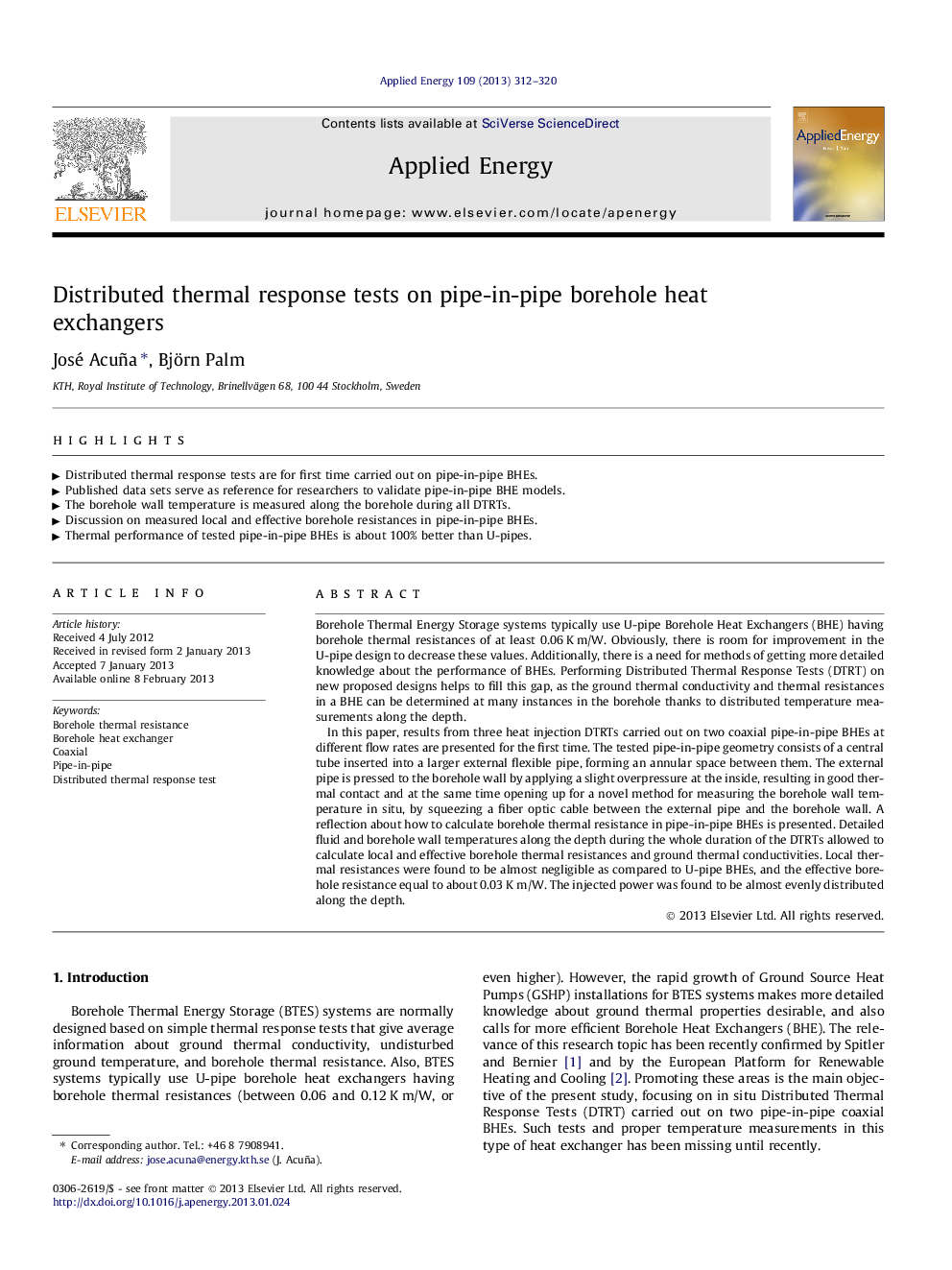| Article ID | Journal | Published Year | Pages | File Type |
|---|---|---|---|---|
| 243108 | Applied Energy | 2013 | 9 Pages |
Borehole Thermal Energy Storage systems typically use U-pipe Borehole Heat Exchangers (BHE) having borehole thermal resistances of at least 0.06 K m/W. Obviously, there is room for improvement in the U-pipe design to decrease these values. Additionally, there is a need for methods of getting more detailed knowledge about the performance of BHEs. Performing Distributed Thermal Response Tests (DTRT) on new proposed designs helps to fill this gap, as the ground thermal conductivity and thermal resistances in a BHE can be determined at many instances in the borehole thanks to distributed temperature measurements along the depth.In this paper, results from three heat injection DTRTs carried out on two coaxial pipe-in-pipe BHEs at different flow rates are presented for the first time. The tested pipe-in-pipe geometry consists of a central tube inserted into a larger external flexible pipe, forming an annular space between them. The external pipe is pressed to the borehole wall by applying a slight overpressure at the inside, resulting in good thermal contact and at the same time opening up for a novel method for measuring the borehole wall temperature in situ, by squeezing a fiber optic cable between the external pipe and the borehole wall. A reflection about how to calculate borehole thermal resistance in pipe-in-pipe BHEs is presented. Detailed fluid and borehole wall temperatures along the depth during the whole duration of the DTRTs allowed to calculate local and effective borehole thermal resistances and ground thermal conductivities. Local thermal resistances were found to be almost negligible as compared to U-pipe BHEs, and the effective borehole resistance equal to about 0.03 K m/W. The injected power was found to be almost evenly distributed along the depth.
► Distributed thermal response tests are for first time carried out on pipe-in-pipe BHEs. ► Published data sets serve as reference for researchers to validate pipe-in-pipe BHE models. ► The borehole wall temperature is measured along the borehole during all DTRTs. ► Discussion on measured local and effective borehole resistances in pipe-in-pipe BHEs. ► Thermal performance of tested pipe-in-pipe BHEs is about 100% better than U-pipes.
